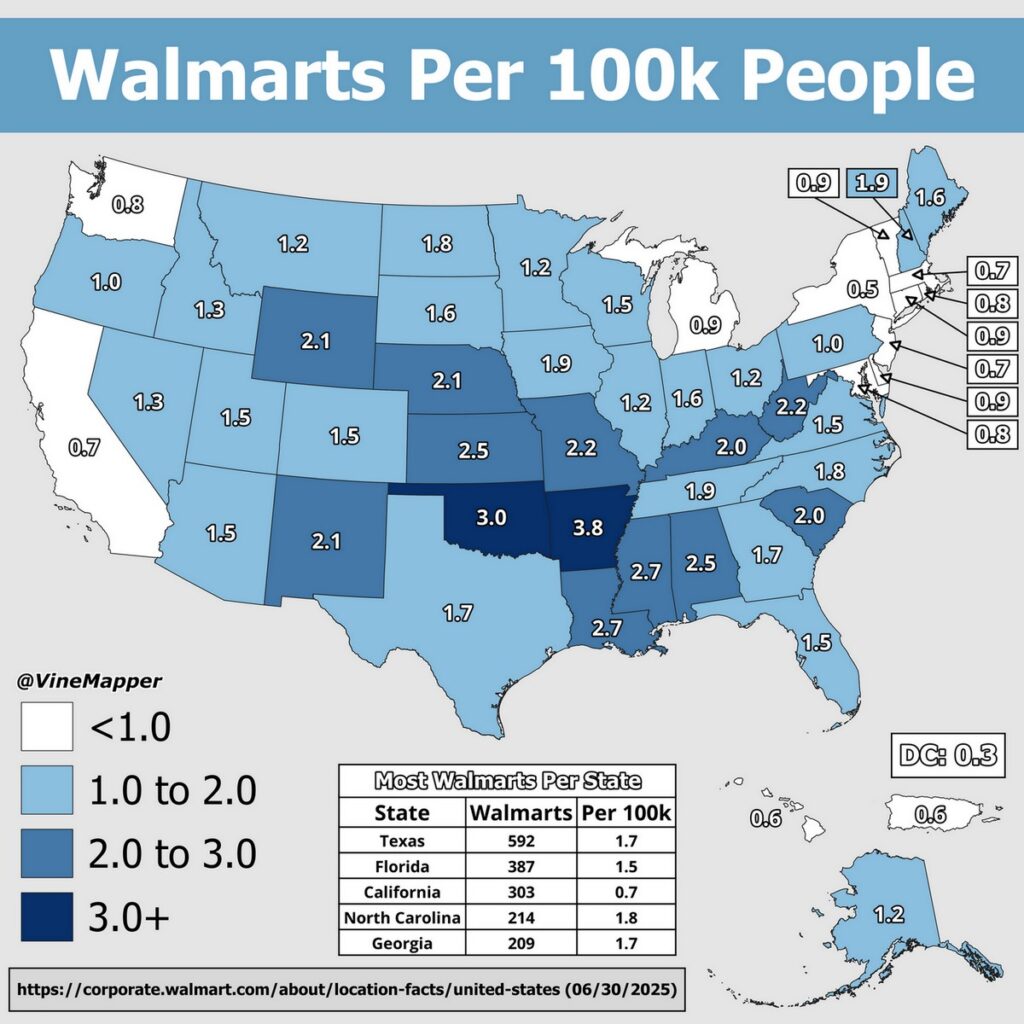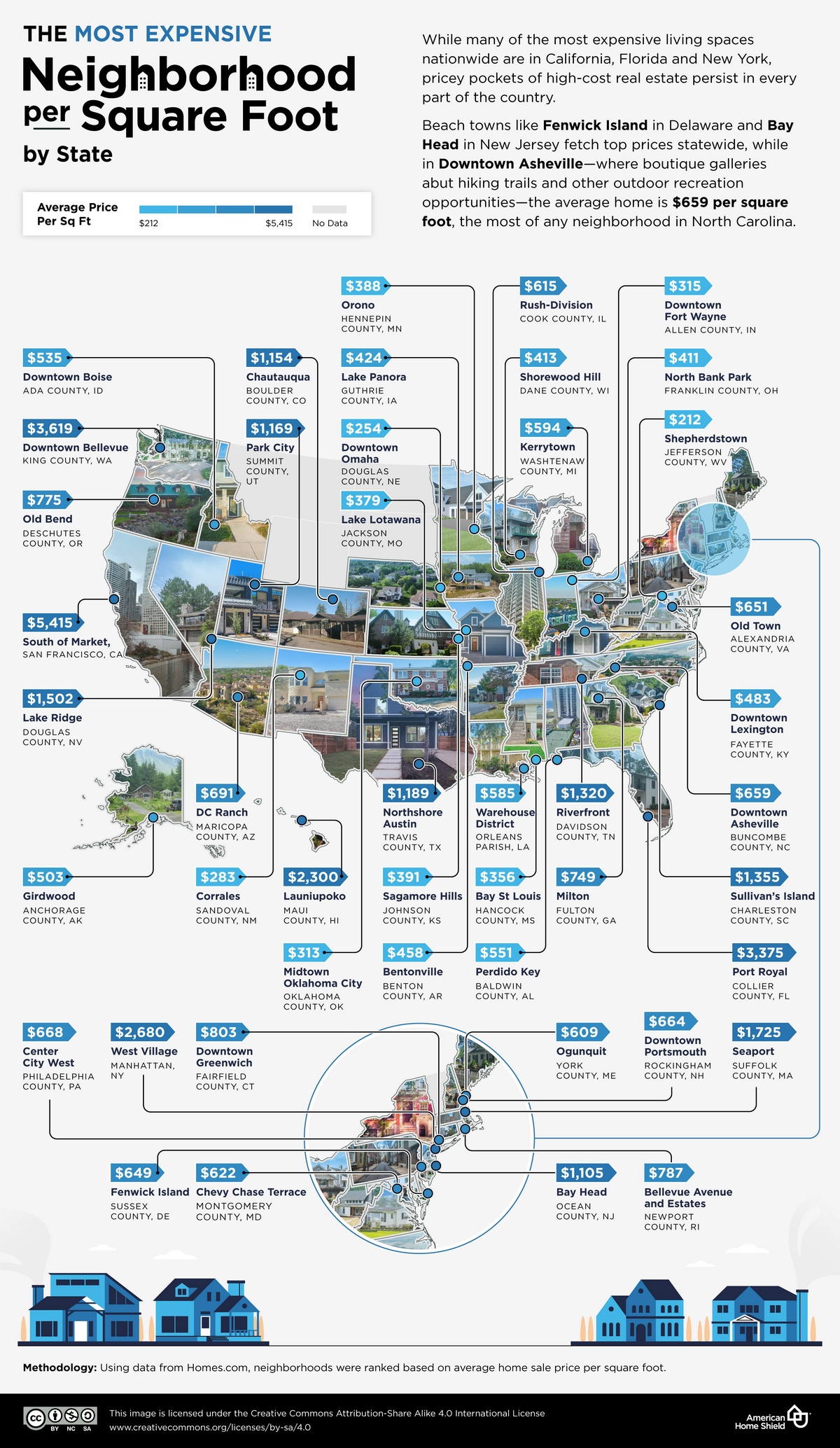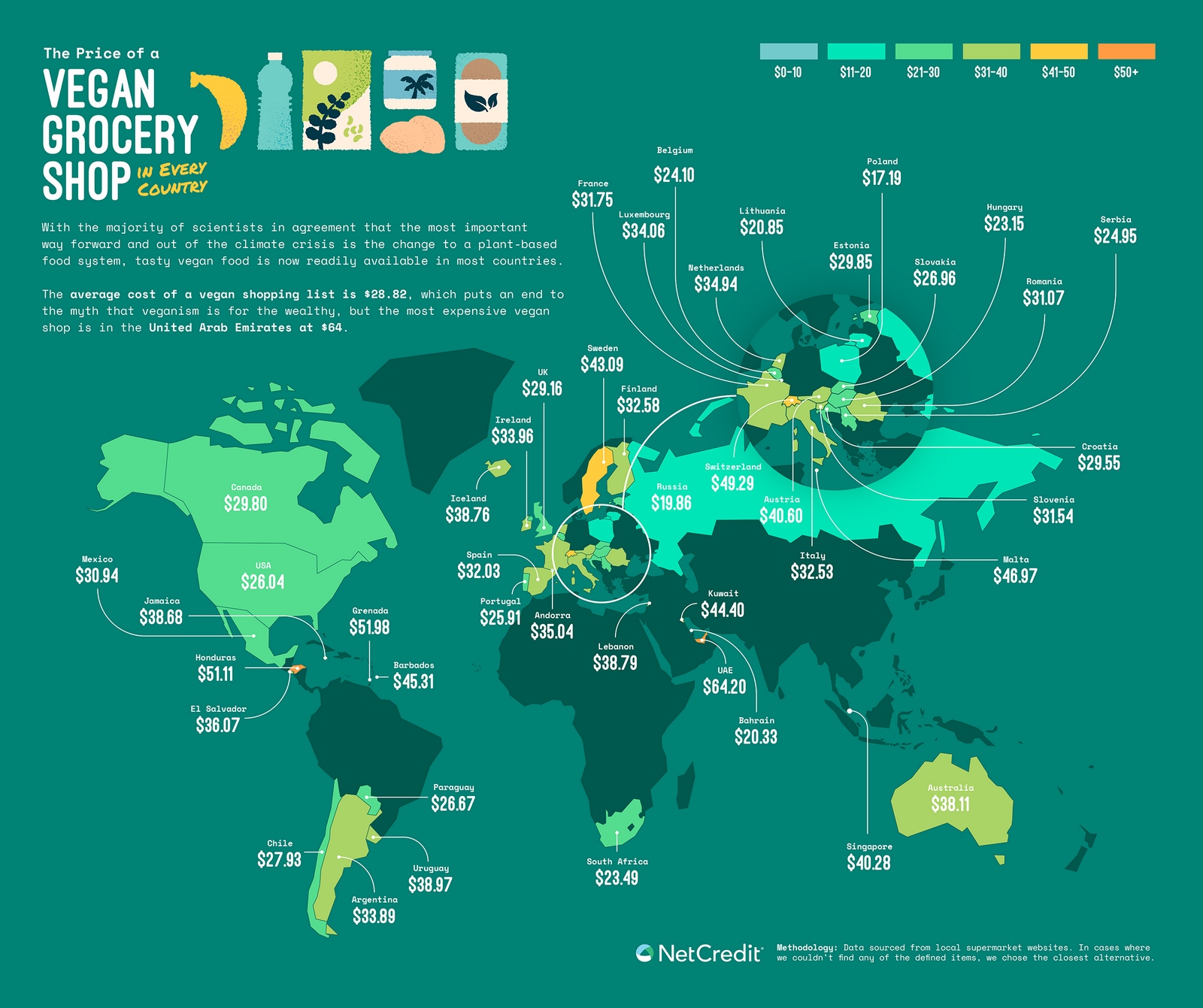From One Store in Arkansas to This: Mapping Walmart’s Uneven Spread Across America
Walmart’s growth has been one of the most dramatic stories in retail. It all began in 1962 when Sam Walton opened the first store in Rogers, Arkansas, with a simple goal: to offer lower prices to everyday people. That basic idea turned into something enormous.
Today, Walmart operates over 10,500 stores in 20 countries and under 48 brand names, ranging from hypermarkets to neighborhood grocery stores. The name is everywhere – and for many people in the U.S., shopping at Walmart is part of their weekly routine.
To understand how Walmart became such a staple of American life, it helps to look at where it all started and how fast the company expanded.
Below is a historical map showing the spread of Walmart stores across the United States between 1962 and 2006. The growth began in the South and gradually moved outward, covering the Midwest, West Coast, and Northeast in just a few decades.

As Walmart grew, its strategy focused on small towns and rural areas – places often underserved by other retailers. That allowed the company to build loyalty in communities where it quickly became the one-stop shop for groceries, clothes, electronics, and more.
By the 1990s and 2000s, Walmart’s presence had become so widespread that in the U.S. today, it’s almost impossible not to live within driving distance of a store.
You might assume that the most populous states have the most Walmarts – and you’d be right in raw numbers. Texas leads the pack with 592 stores, followed by Florida (387) and California (303). But what happens when we adjust for population size?
Reddit user @VineMapper created a detailed map using Walmart’s official location data from June 30, 2025 (source). The map shows how many Walmarts exist per 100,000 people in each U.S. state. Unsurprisingly, Arkansas – where Walmart was founded – leads the nation with 3.8 stores per 100k residents. West Virginia, Oklahoma, and Mississippi aren’t far behind.
Meanwhile, dense, urbanized states like California, New Jersey, and Massachusetts have fewer than 1 store per 100k people. And Washington, D.C., sits at the bottom with just 0.3.

The company pulls in over $600 billion annually – more revenue than entire countries generate in economic output. We’re talking about earnings that dwarf nations like Sweden, Belgium, or Thailand (World Bank). It’s like having a country-sized economy that happens to sell groceries and socks.
Here’s a map from 2017 that puts this into perspective – highlighting which countries had a higher GDP than Walmart’s yearly revenue at that time. Keep in mind, this comparison has shifted over the years as economies have grown. China’s GDP, for example, now far exceeds Walmart’s annual revenue, but the map still gives you a sense of just how massive this retail giant really is.

The workforce behind all this? It’s massive. Walmart keeps 2.3 million people on payroll globally, including 1.6 million Americans (Walmart ESG Report 2024).
So what’s the Walmart situation like where you live? Are you in one of those Arkansas-style states where there’s one on every corner, or more like California where you might have to actually drive somewhere to find one?
Intrigued by Walmart’s success? Check out these books available on Amazon for more insights.








